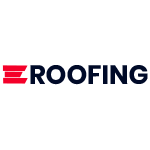Dry Ridge System Costs: Installation & Maintenance Guide. Glanced up at your roof recently and wondered if those ridge tiles might fancy a bit more freedom from mortar? You’re not alone. Enter the dry ridge system—an ingenious setup that does away with traditional mortar for a secure, mechanical fix.
It keeps your tiles in check without the trouble of cracking or crumbling. It helps everything stay snug and sorted up top while giving your roof a chance to air out.
Want to know more? Read on to see whether this could be your roof’s next best friend.
Is the Dry Ridge System Worth It?
We hear the burning question on your lips, “Is the upgrade worth your hard-earned cash?”. The dry ridge system eliminates the need to nip out and redo pointing every few years, which is a common chore with mortar.
The upfront cost? It’s not quite as friendly. But it’s a one-and-done deal. Install it, and forget about high maintenance costs later on.
And the ventilation perks are nothing to sneeze at, particularly if you’re combating the damp, musty old British weather. Keeping the under-roof dry and airy can ward off a slew of damp disasters. That’s good news for your loft – it stays healthier, and so does your wallet in the long run.
Fancy checking out your options? Have a nosey at our pitched roofing section to see what could fit your rooftop bill.
Dry Ridge System Costs
Investing in a dry ridge system does entail forking out some initial dosh. But even though the upfront cost is higher, you’ll save on repairs later on. For the actual numbers, you’re looking at possibly more at first than traditional mortar, but there’ll be no sneaky future costs for repairs due to weather damage or degradation.
Installation expenses can vary a bit depending on your roof’s size and sophistication. Generally, though, you might be shelling out a bit more initially compared to laying down some mortar. It’s worth a gander at our roofing sheets for some context on pricing and materials.
Which is Cheaper, the Dry Ridge System or the Mortar?
Weighing up whether to stick with traditional mortar or switch to a dry ridge system? Crunch some numbers first.
Traditional mortar might wink at you with a cheaper upfront cost. But it demands ongoing upkeep and the occasional touch-up due to weather wear and tear.
On the flip side of the coin, a dry ridge system could look like the costlier option initially. That said, it’s the kind that doesn’t keep dipping into your wallet.
Think of it as paying for peace of mind. No repointing costs, less repeated check-ups, and better resistance to the fancies of Mother Nature.
Want to peek at some figures? Take a look at our flat roofing products for some price tags.
How Long Does a Dry Ridge System Last?
Now, longevity – that’s where the dry ridge system really struts its stuff. Mortar has its allures but tends to show its age as the years roll on, what with all the cracking and potential for leaks. A dry ridge system? It’s slow and steady, and incredibly long-lasting.
We’re talking a lifespan that can easily support the life of your tiles. Most dry ridge systems are built to last at least as long as your roof coverings—if not outlast them. This means you could be looking at 30 years or more of not having to fret about the ridge of your roof. That’s a lot of years not spent looking up at the ceiling during a rainstorm.
For the technical specs or if you’ve got a niggling question, why not check out our roof vents section to see how they complement a well-set-up dry ridge system?
Do Dry Systems Leak?
Well, if you’re eyeing a dry ridge system, you’re likely looking to avoid the drama of a drip. Here’s some good news for you – dry ridge systems are pretty much the Fort Knox of roofing when it comes to keeping water out. Thanks to their snug, mechanical fixings, these systems lock tiles down tight—no room for water to gate-crash.
Of course, no system is completely immune to the forces of nature, but compared to the old-school mortar, which can fracture and deteriorate, letting in water, a dry ridge holds up well.
At the end of the day, it all hinges on the quality of installation, though. Get it done right, and you should enjoy a dry, comfy home for years.
Need more convincing? Pop over to our guttering section to see how proper drainage pairs with a tight, leak-free roof.
What’s Involved with Dry Ridge System Installation?
So, you’ve decided to go with a dry ridge system—top choice! But how do you install it? Thankfully, there isn’t a lot of heavy lifting involved – it’s more about precision. The real beauty of a dry ridge lies in its simplicity. You won’t see any messy mortar mixing or frantic curing times.
Instead, you have a series of clamps and screws that hold those ridge tiles down tight.
The process kicks off with aligning your tiles perfectly and then securing them into place with the fixing system designed to resist the best of British gusts and downpours.
Do You Need Building Regs for a Dry Ridge System?
Yes, even roofing isn’t free from the long arm of the law. But while you generally don’t need planning permission for roof maintenance and repairs, a dry ridge system might tweak the structure or appearance of your roof, depending on your specific situation.
This means a quick check-in with your local council’s building control might be a smart move. You want to keep things above board and make sure your new setup ticks all the legal boxes.
And above, sticking to the regs could help avoid any annoying penalties or problems when it comes time to sell your home.
Dry Ridge System Maintenance is Easier Than You Think
“How do you maintain a dry ridge system?” we hear you cry. Well, you’ll be pleased to know it doesn’t take a lot of effort. That’s right, once your dry ridge is up there, it’s pretty much a case of ‘fit and forget.’ No need for the annual once-over with mortar ridges, checking for flaws or disintegration.
Your main job? Just a visual check now and again to ensure everything looks secure and nothing’s shifted out of place after those notorious British storms.
If you ever spot a clip out of line or a tile looking a tad out of sorts, most fixes are simple enough to sort out without calling in the cavalry. It’s more about keeping an eye out rather than gearing up for big repair jobs.
The Takeaway
So, it’s clear then. A dry ridge system is a sturdy choice for your roof – and also a smart one. With minimal maintenance, remarkable longevity, and the ability to stand stable against the British weather, it could be the roofing upgrade you didn’t know you needed.
Niggling questions? Need a bit of expert advice before making the leap? Our team is on hand to help. Just head over to our contact page. Dry Ridge System Costs: Installation & Maintenance Guide





